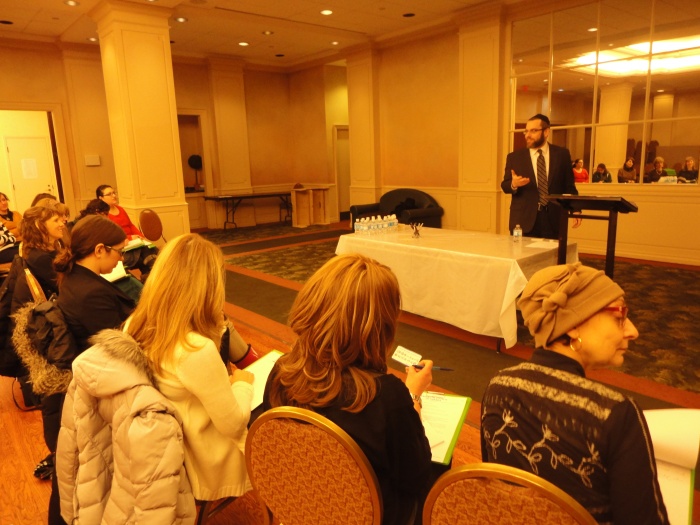By Nancy Weisbrod
This week marked the first class of the 3 part series called Mashgiach @ Home. While we are all busy in the next week or so getting ready to celebrate the holiday of Purim, this series offers a unique opportunity to learn how to apply the laws of kashruth with COR’s Director of Community Kosher, Rabbi Tsvi Heber.
We were enthralled as Rabbi Heber walked us through the first class of Mashgiach @ Home. From young students to Bubbies, there was a wide range of backgrounds among the participants that spanned from ‘new to the world of kosher’, to women who have been keeping kosher for decades. What united us all was the desire to gain more knowledge and understanding of how to be cleverer, more informed and joyful in managing our kosher kitchens.
Mashgiach ‘secrets’ and back door insights were shared that definitely reframe the way many of us think about keeping a kosher home.
Rabbi Heber introduced the idea of applying a 3 layered model, entitled the Kosher Pyramid, in formulating our thoughts and decisions. The foundation layer is Ingredients, the second layer is Equipment, and the top layer is Process.
In the first class, we discussed Ingredients. One of the most surprising pieces of information taught was that there is a category of ingredients that are innately kosher and do not require certification. These are called Group 1 ingredients. Now lest we became giddy, we were cautioned that this list is constantly changing. Therefore it is also important to consistently ask questions if we want to use these ingredients, because although the ingredients, themselves, may be kosher, the equipment or process may not.
It is a wonderful feeling to be able to settle all the small inconsistencies and stories we hear that cloud our clarity when it comes to keeping the mitzvah of Kashruth. It is also empowering to know we can exercise our judgement and
1. save money by purchasing certain ingredients at a lower cost, and
2. buy some items (such as extra virgin olive oil) that have unique properties.
I would like to leave you with a recipe for a vegetable kugel, using either zucchini or broccoli that would be lovely served at a Shabbos meal, Purim seuda or even baked in small loaves or muffin tins and given as Mishloach Manos.
Shabbat Shalom,
Nancy Weisbrod, Director of Culinary Education, Kashruth Council of Canada
Zucchini or Broccoli Kugel
Serves 8
3 Tablespoons margarine
3 Tablespoons flour
2 cups unsweetened almond or soya milk
1 teaspoon salt
½ teaspoon pepper
Either:
8 medium zucchini, grated or 2 lb bag of frozen broccoli
2 onions, finely chopped 2 onions, finely chopped
2-3 Tablespoons olive oil
1 teaspoon salt
½ tsp pepper
4 eggs, separated with the whites stiffly beaten
Prepare a 9” square pan by lining it with parchment paper.
Preheat the oven to 350 degrees.
To make the white sauce, heat the milk to just below scalding.
In a saucepan, melt the margarine over medium heat. Stir in the flour and cook, stirring continuously until the flour is cooked but not browned. Add the hot milk and cook until the sauce thickens. Lower the heat and cook for a few minutes more. Season with salt and pepper and set aside.
Heat the olive oil in a deep sided skillet. Sauté the onion for a few minutes or until translucent and then add either the zucchini or broccoli.
If making the zucchini kugel, it has to be cooked for about 20 minutes because it gives up a lot of moisture.
If making the broccoli kugel, sauté for about 5-10 minutes, season with salt and pepper and coarsely puree in a food processor.
Blend in the white sauce and egg yolks, one at a time.
Fold in the egg whites.
Pour the pudding in the pan and bake for about 50-60 minutes.

